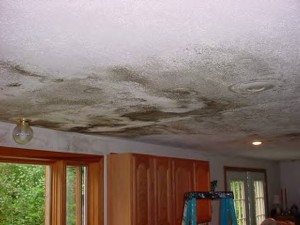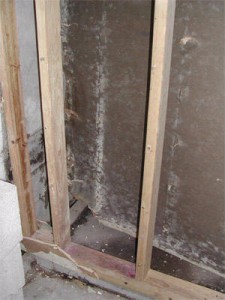Can Moisture and Water Damage To Your Home Be Hazardous to Your Health?
Mother Nature has proven year after year that havoc can occur at a split second. Tens of thousands of building structures across the country have suffered moisture/water damage as a result of severe weather (acts of God) or just plain bad luck.
Water damage to a home or building can occur in many ways. Even the most solidly built and well-maintained home or building can be damaged by a violent force of nature, such as a flood, hurricane, tornado, or wildfire.
Water Damage To Your Home
In other situations, a water pipe may burst, and air conditioning leak, moisture intrusion, backed up septic tank or sewer line, or a sump pump may malfunction while you’re away on vacation and do serious water damage to your home and possessions. Understanding the categories of moisture/water damage is the first step in getting your home or building back to normal conditions.
Categorizing the level of contamination of water in a damaged structure is required to perform loss assessment and evaluation activities. The category of water contamination must be considered so the correct procedures can be established for processing water-damaged structures and materials.
Water damage is divided into three general categories:
1) Category 1 – Clean Water
2) Category 2 – Gray Water
3) Category 3 – Black Water
However, the category of water contamination should not be identified solely by the color of the water, but by the source, contents, history and characteristics of the water.
Category 1– Clean water originates from a source that does not pose substantial harm to humans if the cleanup is performed within 24 hours of occurrence. Clean water sources may include, but are not limited to, broken water supply lines, melting ice or snow, falling rainwater, broken toilet tanks and toilet bowls that do not contain contaminants or additives. Clean water that has contact with structural surfaces and content materials may deteriorate in cleanliness as it dissolves or mixes with soils and other contaminants, and as time elapses.
Category 2– Gray water contains a significant level of contamination and has the potential to cause discomfort or sickness if consumed by or exposed to humans. Gray water carries microorganisms and nutrients for microorganisms. Examples of gray water sources may include, but are not necessarily limited to, discharge from dishwashers or washing machines, overflows from washing machines, overflows from toilet bowls with some urine (no feces), sump pump failures, seepage due to hydrostatic pressure, broken aquariums and punctured water beds. Gray water may contain chemicals, bio-contaminants (fungal, bacterial, viral, algae) and other forms of contamination including physical hazards. Time and temperature aggravate Category 2 water contamination levels significantly. Gray water in flooded structures that remains untreated for longer those 48 hours may change to Category 3.
Category 3– Black water contains pathogenic agents and is grossly unsanitary. Any persons with compromised immune systems, respiratory problems or allergies, or who are under 2 years of age or elderly must remain off the job site until the building is judged safe for occupancy. Black water includes sewage and other contaminated water sources entering or affecting the indoor environment. Toilet backflows that originate from beyond the toilet trap is considered black water contamination, regardless of visible content or color. Category 3 water includes all forms of flooding from seawater, ground surface water and rising water from rivers or streams. Such water sources carry silt and organic matter into structures that create black water conditions. The water is considered to be Category 3 water in situations where structural materials and/or contents have been contaminated with such contaminants as pesticides, heavy metals, or toxic substances.
Water Damage Is Hazardous To Your Health
Even when a building structure has recovered from water damage (cat 1 thru cat 3), it can still pose a health threat. Though everything may appear OK visually, the interstitial side of the buildings structure may be blooming with fungal propagules. Discoloration of the walls and other places are primary indicators that mold remediation is needed. If the discoloration is in multiple places, it is of even more concern as the interstitial sides could be 10 to 100 times greater than what is visibly seen. Usually these circumstances signify there is mold growing in the house as a result of the previous damage, and this could be hazardous to the health of individuals living in the house.
You Need A Minnesota Water Damage Restoration Professional
A professional evaluation is needed to better ascertain the extent of the potential damage that may be lurking in your home or building. Hire a professional Minnesota Water Damage Restoration Company to determine the cause of potential damage and provide a specific remedy for effective removal.
Water damage can be hazardous to your health if the proper, effective identification (Cat 1-3), professional analysis and remediation are not taken into effect.
If your home or business has sustained ANY type of water damage, you need to have a qualified Minnesota restoration company that does Water and Flood Damage Cleanup. They will have the proper state-of-the-art equipment to clean up any water damage, such as Fans, Dehumidifiers, Air Scrubbers, Ozone Machines, Desiccants that can save most valuables.



